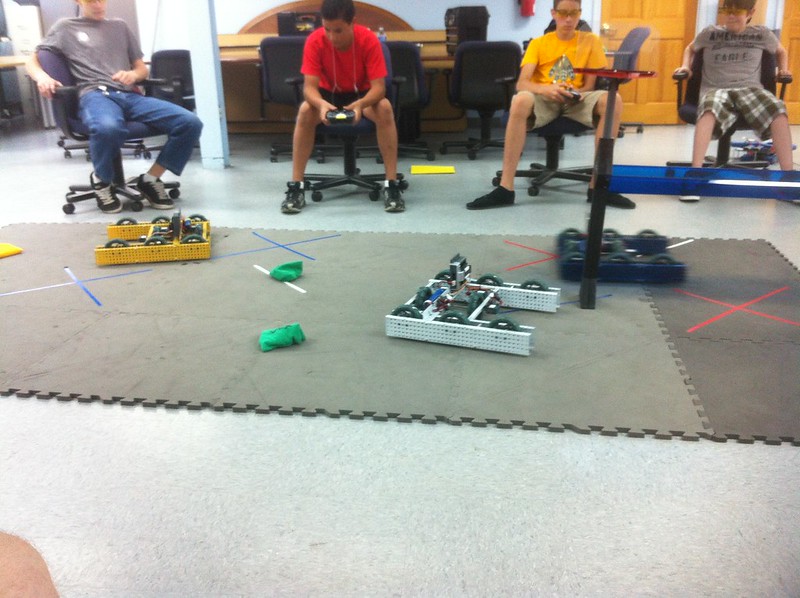After that the bulk of the meeting was spent on building 3 accumulator prototypes for testing. The crew got ALL of the work done in our time frame and we learned a ton. 1414A prototyped a polycarbonate ramp (we knew we wanted polycarbonate sliding under the sacks based on early meeting testing) with an "FRC-style" roller made from high strength gears, threaded beam, and covered in no-slip pad. 1414B prototyped a polycarbonate ramp with tank tread rollers doing the collecting. After initial testing this crew also added VEX foam to see if coefficient of friction could be improved. 1414C prototyped a polycarbonate ramp with just tank tread sprockets doing the active collecting. Here's a quick video showing some of our testing:
From prototype testing here's what we learned:
1. Simple use of tank tread sprockets does not provide enough friction to gather sacks.
2. We liked what the tank tread rollers could do after covered in foam, but the weren't as efficient as we would like and this will be a heavier system to lift. The speed at which this diameter spun was highly desirable though.
3. The FRC-Stlye Roller/non-slip pad looks to be our best option for sure! We're going to proceed with this design, but look for ways to speed up the intake using a favorable gear ratio.
2. We liked what the tank tread rollers could do after covered in foam, but the weren't as efficient as we would like and this will be a heavier system to lift. The speed at which this diameter spun was highly desirable though.
3. The FRC-Stlye Roller/non-slip pad looks to be our best option for sure! We're going to proceed with this design, but look for ways to speed up the intake using a favorable gear ratio.
4. All of our prototypes were single-motor powered and did not overheat during testing. Good news, because we'll be using two motors on the real system and it seems as though we won't have to overwork the system.
5. The "mouth" opening between the roller and polycarbonate with have to be of a flexible distance in order to accommodate sacks in multiple orientations with shapes changing while accumulating as well as dealing with sacks on top of each other.
6. Since the polycarbonate slides so easily under sacks we will want the polycarbonate to contact the sacks BEFORE the roller contacts the sacks to help ensure smooth accumulation.
Looking forward to our next meeting when we figure out arm/lift/linkage geometry and ratios!
-Kressly

No comments:
Post a Comment